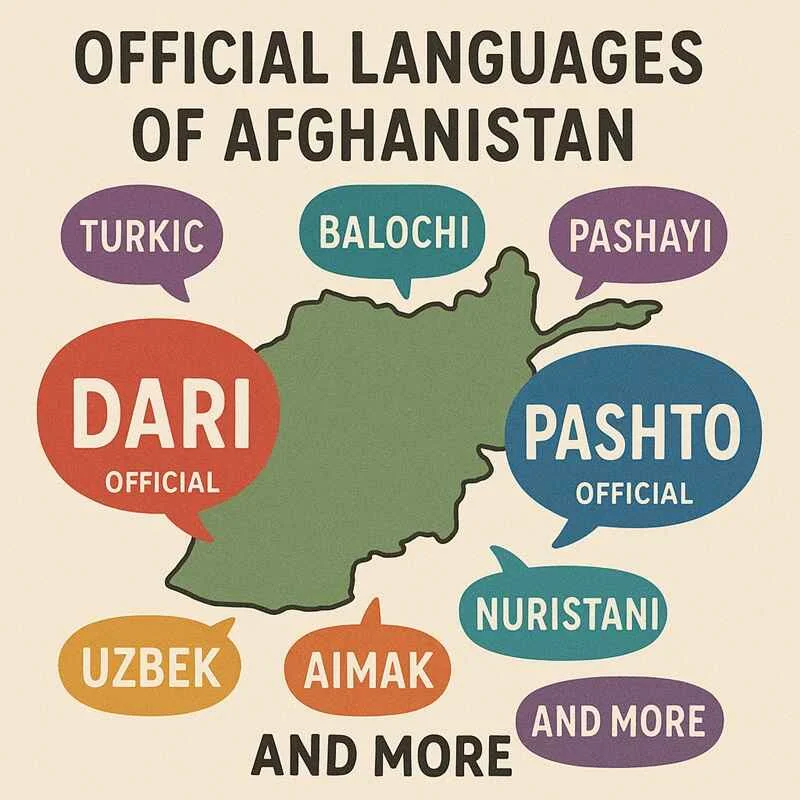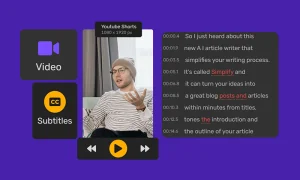Afghanistan isn’t just a country of two languages; it’s a unique place where dozens of tongues, identities, and cultures meet, though most people only know about Dari and Pashto. The real story is much deeper and more complex than it seems at first glance.
Afghanistan is kind of like a linguistic melting pot, as you have two official languages, Dari and Pashto, both used in government schools, TV, and everything. But here’s the twist, they’re not even related.
Dari is basically Persian, the same family as Farsi from Iran. Pashto totally different older roots, way more guttural sounds. If you’ve ever heard someone speak Pashto, it’s like “uh, what planet is this?”
Languages Spoken in Afghanistan List – Spoiler It’s Longer Than You’d Expect
But get this, while those two are the official ones, over 40 languages are spoken across the country. Forty. That’s more than some countries have in total population. Let me name-drop a few
- Dari
- Pashto
- Uzbek
- Turkmen
- Balochi
- Nuristani
- Hazaragi
- Aimaq
- Pashayi
- Arabic is mostly for religious stuff
Dari and Pashto: Official Languages Not Just Formal Stuff But Cultural Divides Too
Well, actually, it’s not just about being official; these two languages also reflect ethnic identity big time. Dari is popular in cities like Kabul, Herat, and Mazar, mostly in central and northern Afghanistan. It’s the lingua franca, kind of like English in Europe, and most Afghans understand it even if it’s not their first language.
Pashto, on the other hand, is mainly used in the southern and eastern provinces, like Kandahar, Paktia, and Nangarhar. It’s the mother tongue of the Pashtun ethnic group, the largest single group in the country.
So yeah, if you’re traveling or trying to blend in, knowing which one to use makes a difference.
Ethnic Languages in Afghanistan, Where It Gets Really Interesting
Now here’s where it gets wild, because outside the big two, there’s a whole bunch of ethnic languages in Afghanistan that give the place its flavor. You’ve got Uzbek and Turkmen speakers up north; those are Turkic languages, super different from Dari or Pashto. South Balochi, Nuristani from the mountains, is very ancient and different, while Hazaragi kind of mixes Dari with a touch of Mongolian. This makes sense because the Hazara people are believed to descend from the bunch of Genghis Khan. When you see a language map of Afghanistan, it looks like a patchwork quilt: no one place really speaks just one thing anymore. Some areas, especially those that are rural, are super multi-lingual. Imagine a small kid born at home learning only Nuristani, going to school to learn Pashto, then going back home to watch TV to learn Dari. It sounds crazy, right?
Buyadia in Southwest, Nuristani in the mountains, these are super old and unique. Hazaragi seems like a combination of Dari with a flavor of Mongolian because it makes sense that Hazara people were thought to belong to Genghis Khan’s mob. Like a patchwork quilt, that’s how Afghanistan’s languages are perceived on a map. There is not one place that speaks just one; some places, especially rural areas, are super multilingual. Imagine a kid who only speaks Nuristani at home, learns Pashto at school, and picks up Dari from the TV-such an insane upbringing.
Language Map of Afghanistan: It’s Like a Linguistic GPS
Speaking of maps, seriously, check out a language map of Afghanistan sometime. It’s not like France, where everyone just speaks French no matter where you go. Nah, Afghanistan. Every mountain range or river valley feels like its own little linguistic world.
For example
North = Turkic zone, Uzbek Turkmen
Central West = Dari heavy
South East = Pashto land
Hidden pockets = Nuristani Pashayi, etc
It’s like the country was built for polyglots.
The Reality Check: Not All Languages Are Treated Equally
Yeah, minority languages rarely get the same attention in schools or on TV. Which is a total bummer when a language fades out, it’s like watching a piece of history disappear with it. I read somewhere that some of these smaller languages are barely being passed down anymore, and once grandparents stop teaching them, Poof is gone.
On the flip side, younger generations are picking up English more now, especially in cities. Not fluent or anything, but enough to get by in business or online, and Urdu, a surprising number of people understand it too, thanks to Bollywood and cross-border ties with Pakistan.
Honestly, though, if you’re visiting or working there, knowing a bit of Dari goes a long way. Even saying Salam hello or Tashakor thanks gets you major points. Oh, and fun fact, Arabic shows up mostly in religious contexts like Quran recitations or mosque signs. It’s not widely spoken conversationally, but it’s everywhere in the script.
Conclusion: It’s Beyond Simply Words
Indeed, Afghanistan is more than just battlegrounds and rough landscapes; it is a fusion of a vibrant blend of voices, dialects, and narratives. Each language, however, tells the story of who inhabited which places at what time and for what. Kind of makes you really appreciate the connectedness, whilst the differences in humanity. Get in touch with the team of TransLinguist if you want to delve into any one language or region.
FAQs
What are the official languages of Afghanistan?
There are two official languages of Afghanistan: Dari and Pashto. They are both equally employed in governmental affairs, education, and media. Dari is more popular in the northern and central regions of the country, while Pashto is spoken mostly in the south and east.
Are Dari and Persian the same?
Dari is actually a dialect of Persian, which is, really, very close to Farsi in Iran. The main differences are in the pronunciation of words and some vocabulary, but in general they could actually communicate.
How many languages are generally spoken in Afghanistan?
In different regions of the country, more than 40 languages are spoken. Well-known are the bigger ones like Uzbek, Turkmen, Balochi, Hazaragi, Aimaq, and Nuristani, along with a variety of smaller dialects.
Dari and Pashto are they similar in any way?
Absolutely not. Having been derived from completely different sets of language families, Dari and Pashto have a complete difference in terms of their formation. Dari is Indo-Iranian, much like Persian, whereas Pashto actually has older and more complex linguistic roots and a different sound system.
What language should I learn if someone is going to visit Afghanistan?
Dari is usually considered the lingua franca in the more urban areas of Afghanistan. Just a few words in Dari, like Salam (hello) or Tashakor (thank you), could create miracles.



